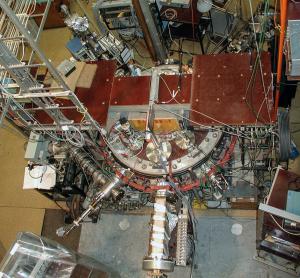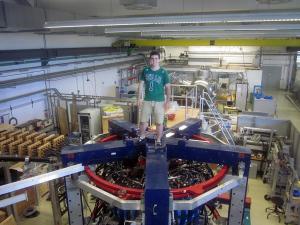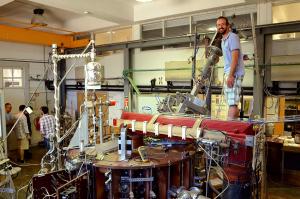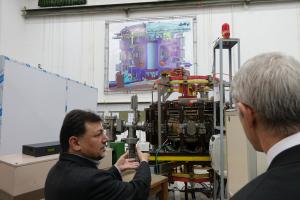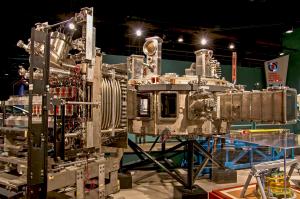The second-hand market
Whatever their size, fusion devices are fine pieces of technology that are complex to design and expensive to build. As research progresses and experimental programs unfold, however, scientific institutions routinely feel the need for machines with additional capacities, up-to-date equipment or exotic features. When an upgrade is not possible the "old" device appears on an unofficial "second-hand market," more often donated than sold—just like one might give away a perfectly functional but not-quite-cutting-edge computer to a nephew, a neighbour or a local association.
Russia, which built and upgraded tokamaks at a very fast pace throughout the 1970s and 1980s, has been one of the most generous contributors to this second-hand market.
In 1999 Brazil received the 20-year-old TCA tokamak from the Ecole polytechnique fédérale de Lausanne, in Switzerland. The device's French name (Tokamak à Chauffage Alfvèn) carries on in the Brazilian acronym TCABR (or TCA-Br). Brazil, which voiced interest in joining ITER in the late 2000s, also operates the NOVA-UNICAMP tokamak, which was the Nova II tokamak at Kyoto University, Japan, in a former life.
WEGA operated in Grenoble for about 10 years, was transferred in 1984 to the University of Stuttgart, Germany, and resumed operation at IPP in 2001—still under the WEGA acronym, but with the "G" now standing for Greifswald and not Grenoble and the final "A" for Ausbildung ("training") in German.
Canada entered fusion research in the late 1970s, and by 1986 the Canadian Centre for Fusion Magnetics (CCFM) operated an experimental tokamak in the Varennes suburb of Montreal. This medium-sized machine, named Tokamak de Varennes, specialized in the study of plasma-wall interactions, and for more than one decade formed the kernel of CCFM activity.
As one final twist to the whole episode, the Tokamak de Varennes was transferred in 2001 to Canada's federal capital, Ottawa, where it now stands as one of the most spectacular exhibits at the Canada Science and Technology Museum — a unique example of a fusion machine on display for the general public.

